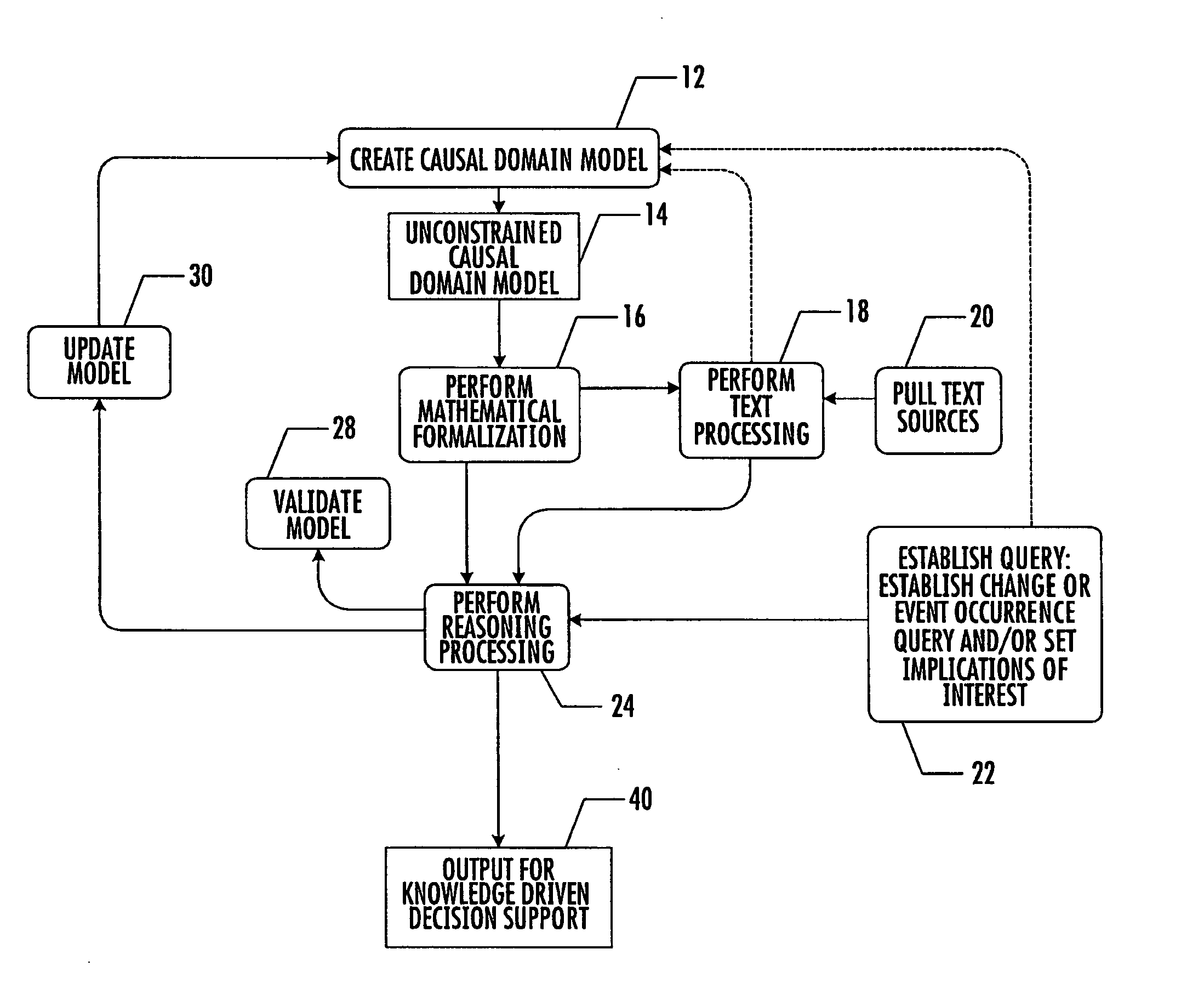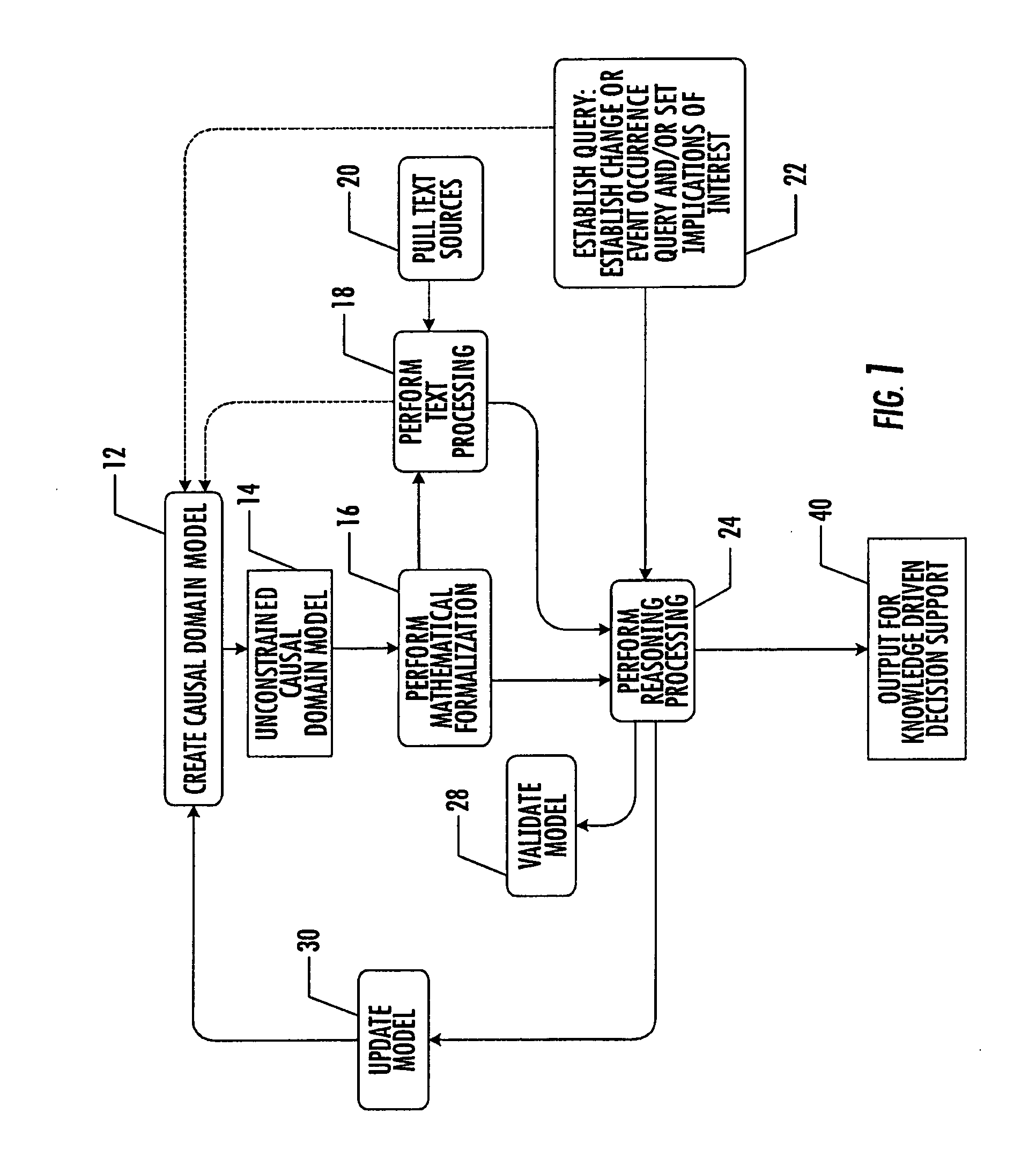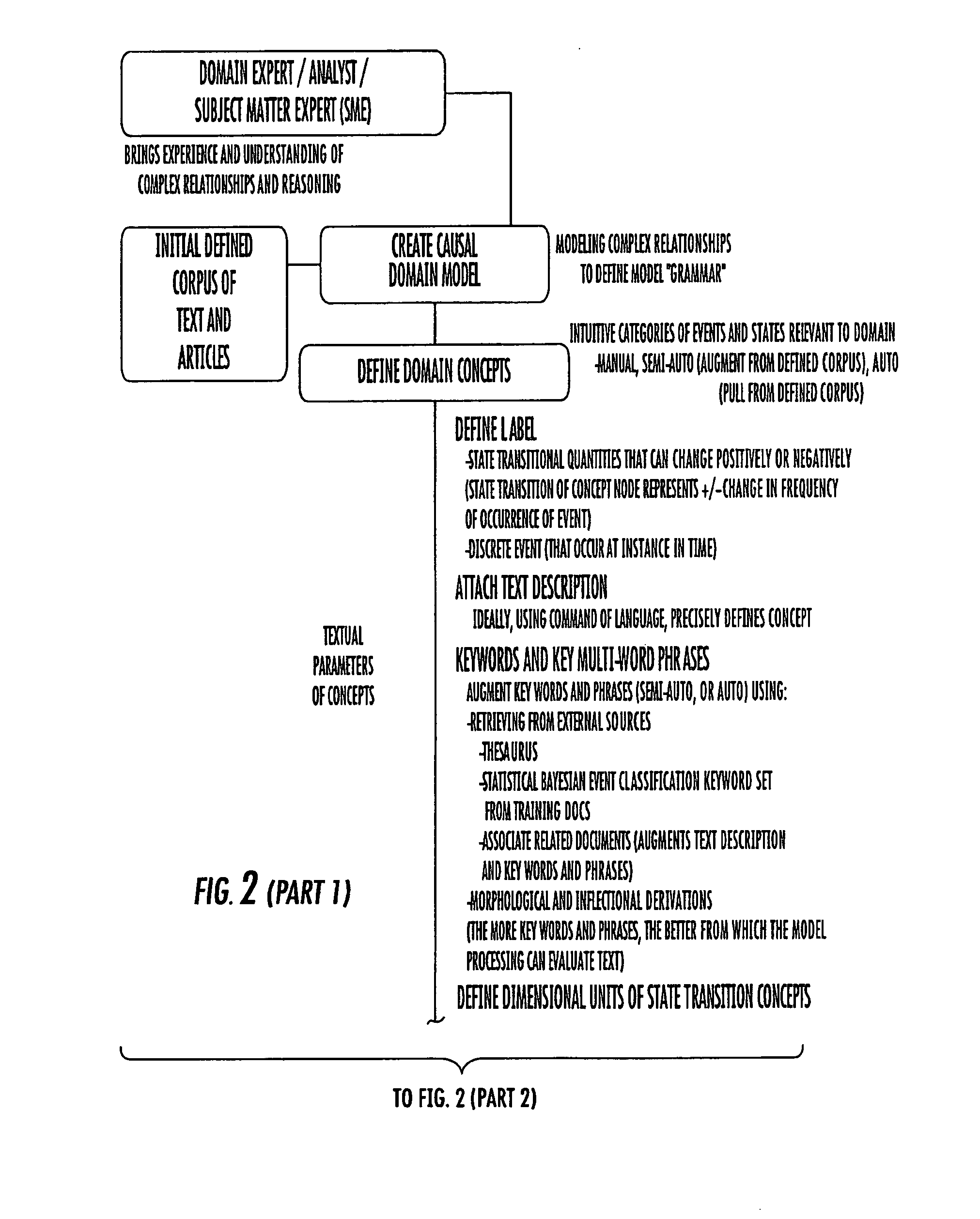System, method, and computer program product for anticipatory hypothesis-driven text retrieval and argumentation tools for strategic decision support
a strategic decision support and text retrieval technology, applied in the field of decision support systems and methods, can solve the problems of unable to fully understand and process information, decision makers and analysts can be prevented from fully understanding information, and particular issues are increasingly complex, so as to achieve effective and accurate decision making, and increase confidence. the effect of accuracy
- Summary
- Abstract
- Description
- Claims
- Application Information
AI Technical Summary
Benefits of technology
Problems solved by technology
Method used
Image
Examples
Embodiment Construction
[0054] The present inventions will be described more fully with reference to the accompanying drawings. Some, but not all, embodiments of the invention are shown. The inventions may be embodied in many different forms and should not be construed as limited to the described embodiments. Like numbers refer to like elements throughout. The present invention uses causal domain models as described in U.S. patent application Ser. No. 11 / 070,452. The following section I and subsections are provided to explain the creation, function, and potential uses of causal domain models. Such causal domain models may be used to predict the likelihood, extent, and / or time of an event or change occurrence as described in U.S. patent application Ser. No. 11 / 220,213. A subsequent section II and subsections are provided to explain the manner of prediction of likelihood, extent, and / or time of an event or change occurrence. Finally, a subsequent section III describes the present invention for anticipatory, ...
PUM
 Login to View More
Login to View More Abstract
Description
Claims
Application Information
 Login to View More
Login to View More - R&D
- Intellectual Property
- Life Sciences
- Materials
- Tech Scout
- Unparalleled Data Quality
- Higher Quality Content
- 60% Fewer Hallucinations
Browse by: Latest US Patents, China's latest patents, Technical Efficacy Thesaurus, Application Domain, Technology Topic, Popular Technical Reports.
© 2025 PatSnap. All rights reserved.Legal|Privacy policy|Modern Slavery Act Transparency Statement|Sitemap|About US| Contact US: help@patsnap.com



